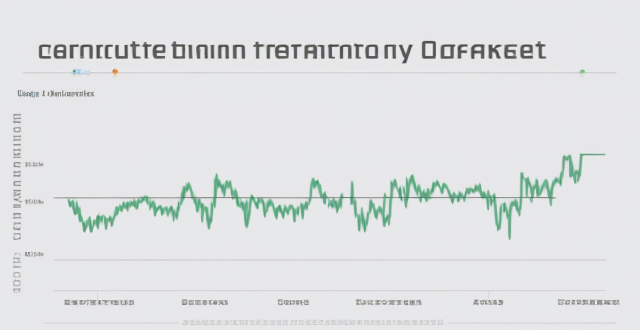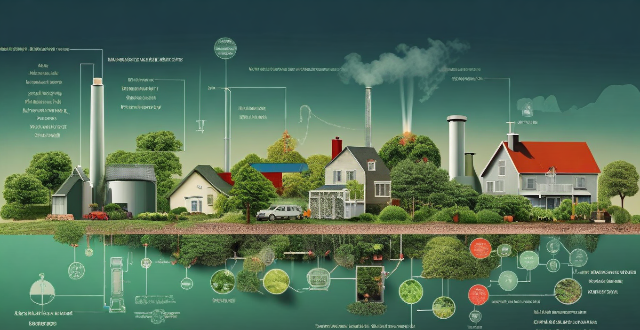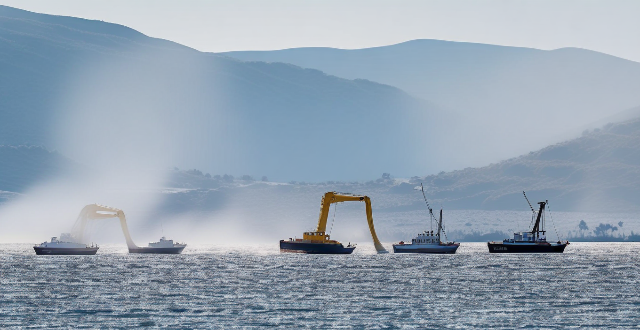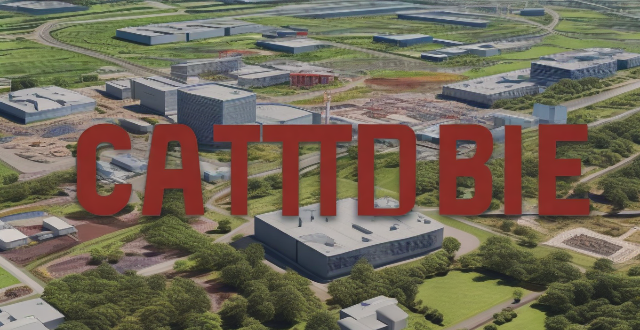Trade Carbon

How does a carbon tax compare to other climate policies, such as cap-and-trade ?
**Comparison between Carbon Tax and Cap-and-Trade Climate Policies:** **Effectiveness:** - **Carbon Tax**: Depends on tax rate, revenue recycling, and international cooperation. Higher rates may reduce emissions but impact the economy negatively. - **Cap-and-Trade**: Depends on the stringency of the cap, market mechanisms, and offsetting mechanisms. A strict cap can lead to significant emissions reductions. **Economic Implications:** - **Carbon Tax**: Incentivizes innovation, impacts consumers (especially low-income households), and can stimulate economic growth through green technologies. - **Cap-and-Trade**: Introduces cost uncertainty, risks market manipulation, and can create jobs in new technologies and industries related to emissions reductions. **Implementation Challenges:** - **Carbon Tax**: Faces political opposition, equity concerns, and requires international coordination for maximum effectiveness. - **Cap-and-Trade**: Requires complex setup and management, strict enforcement, and may face public opposition if perceived as legitimizing pollution. **Conclusion:** Both policies have pros and cons in addressing climate change. The choice often depends on political feasibility, economic considerations, and public acceptance. What's crucial is taking effective action to reduce greenhouse gas emissions.

How do climate change negotiations affect global trade and economic systems ?
Climate change negotiations play a crucial role in shaping global trade and economic systems. These negotiations aim to find solutions to the challenges posed by climate change, such as reducing greenhouse gas emissions, promoting renewable energy sources, and protecting biodiversity. The outcomes of these negotiations have far-reaching implications for international trade, investment, and economic development. In this article, we will explore how climate change negotiations affect global trade and economic systems. One of the key impacts of climate change negotiations on international trade is the imposition of tariffs and subsidies on goods and services that contribute to climate change. For example, countries may impose higher tariffs on imported goods that are produced using high levels of carbon emissions or other environmentally harmful practices. Similarly, governments may provide subsidies to domestic industries that adopt sustainable practices or invest in renewable energy technologies. These measures can create trade barriers and distort market competition, affecting global trade patterns. Another way in which climate change negotiations can influence international trade is through the implementation of carbon pricing mechanisms, such as carbon taxes or cap-and-trade systems. These mechanisms aim to internalize the external costs of carbon emissions by making polluters pay for their emissions. As a result, companies that rely heavily on fossil fuels or produce high levels of emissions may face increased costs, making their products less competitive in global markets. On the other hand, companies that invest in low-carbon technologies or adopt sustainable practices may gain a competitive advantage. Climate change negotiations often lead to the adoption of stricter environmental standards and regulations at both national and international levels. These standards can affect international trade by creating compliance costs for exporters and importers. For instance, companies that export goods to countries with stringent environmental regulations may need to invest in cleaner production processes or face penalties for non-compliance. Similarly, importers may prefer to source goods from suppliers that meet certain environmental standards, affecting trade flows and market access. Climate change negotiations also have significant implications for investment and economic development. As countries commit to achieving ambitious climate targets, there is an increasing demand for green finance and investment in sustainable projects. This can create new opportunities for investors and businesses that focus on renewable energy, energy efficiency, and other low-carbon sectors. However, it can also lead to capital flight from traditional fossil fuel industries, affecting economies that rely heavily on these sectors. Climate change negotiations often include provisions for technology transfer and innovation cooperation between developed and developing countries. This can help bridge the gap between countries with different levels of technological capabilities and promote sustainable development worldwide. By facilitating the transfer of clean energy technologies and supporting research and development efforts, climate change negotiations can foster economic growth and job creation in emerging markets. Finally, climate change negotiations address the urgent need for adaptation financing and support for vulnerable communities affected by climate change. This includes funding for infrastructure improvements, disaster risk reduction, and other measures that help countries adapt to changing climate conditions. While these efforts are essential for protecting human lives and livelihoods, they also represent significant economic opportunities for businesses involved in climate resilience and adaptation services. In conclusion, climate change negotiations have far-reaching implications for global trade and economic systems. By imposing tariffs and subsidies, implementing carbon pricing mechanisms, setting environmental standards, promoting green finance and investment, facilitating technology transfer and innovation, and providing adaptation financing and support, these negotiations shape the future direction of international trade and economic development. As we continue to grapple with the challenges posed by climate change, it is crucial for policymakers, businesses, and civil society to work together to ensure that our responses to this global challenge are aligned with our collective goals for sustainable prosperity.

How do ecological taxes compare to other environmental policies, such as cap-and-trade systems ?
The text discusses the comparison of two environmental policies: ecological taxes and cap-and-trade systems. It explains what these policies are, their advantages, disadvantages, and concludes that the choice between them depends on political feasibility, administrative capacity, and public acceptance.

Can I trade in my old iPhone for a new one ?
This article discusses various options for trading in an old iPhone for a new one, including Apple's trade-in program, carrier trade-in programs, and third-party trade-in websites. It highlights the benefits and considerations of each option and provides tips on how to get the most value for your old device.

How have recent trade tensions impacted international finance ?
Recent trade tensions have had a significant impact on international finance, increasing uncertainty, contributing to volatility in financial markets, and leading to changes in investment patterns. Companies may hesitate to make long-term commitments or expand into new markets due to the uncertainty created by trade tensions. Additionally, sudden announcements of new tariffs or trade restrictions can cause stock prices to drop rapidly, while news of a potential resolution can cause them to rise quickly. Changes in investment patterns may also occur as companies invest more heavily in countries where they are less likely to face trade barriers, and investors shift their portfolios away from industries that are likely to be impacted by trade tensions.

How do international trade agreements influence environmental policies and sustainability efforts ?
International trade agreements significantly influence environmental policies and sustainability efforts through harmonization of standards, potential for environmental dumping, promotion of green trade practices, and challenges in balancing trade liberalization with environmental protection. These agreements can either elevate global environmental standards or lead to a race to the bottom in regulatory protections. Policymakers must navigate the complexities of these agreements to ensure they support sustainable development goals without undermining environmental commitments.

How is the price of carbon credits determined in the carbon trading market ?
The price of carbon credits in the carbon trading market is determined by various factors, including supply and demand, regulatory policies, and market dynamics. The balance between supply and demand significantly affects the price, with high demand increasing the price and oversupply decreasing it. Regulatory policies such as cap-and-trade systems and carbon taxes also play a crucial role in setting limits on emissions and creating incentives for companies to reduce their emissions or purchase carbon credits to offset them. Market dynamics such as speculation, liquidity, and transparency can also impact the price of carbon credits. As awareness of climate change grows, the demand for carbon credits is likely to increase, driving up their price. However, ensuring transparent and efficient operation of the carbon market is essential to maximize its potential benefits for both companies and the environment.

What is the latest update on the NBA trade deadline ?
The NBA trade deadline has passed, resulting in severalThe NBA trade deadline has passed, resulting in several impact the league's play resulting in several notable trades that could impact the league's playoff race and future team dynamics. Key trades include the Boston Celtics acquiring Evan Fournier, the San Antonio Spurs sending LaMarcus Aldridge to the Brooklyn Nets, the Golden State Warriors acquiring Andrew Wiggins and D'Angelo Russell, and the Miami Heat acquiring Andre Iguodala. These moves have implications for both the teams involved and the league as a whole, with potential shifts in power and long-term effects on player development and team rebuilding efforts. Fan reactions to these trades have been mixed, with excitement and disappointment among different fan bases.

How does a carbon tax impact the economy ?
**Impact of Carbon Tax on the Economy** 1. **Revenue Generation**: Increases government funds for public projects and welfare programs. 2. **Cost Pass-Through**: Businesses may increase prices, leading to inflation. 3. **Energy Efficiency**: Promotes investment in energy-efficient technologies, stimulating clean energy industries. 4. **Job Creation**: Creates jobs in clean energy sectors but can lead to job losses in fossil fuel-dependent industries. 5. **International Trade**: May affect competitiveness and increase imports from countries without carbon taxes. 6. **Environmental Benefits**: Mitigating climate change contributes to long-term economic stability.

What is the carbon trading market ?
The carbon trading market is a financial mechanism that allows for the trading of emissions reductions to meet greenhouse gas emission targets. It is based on cap-and-trade, where a limit is set on total emissions and those who reduce their emissions below the cap can sell their surplus allowances. Key components include carbon credits, emissions caps, trading mechanisms, verification and certification, and regulation and governance. Benefits include cost-effectiveness, flexibility, innovation incentives, and global collaboration. Challenges and criticisms include equity concerns, market inefficiencies, environmental integrity, and political will. The carbon trading market serves as a crucial tool in the fight against climate change but requires ongoing attention and improvement to maximize its effectiveness.

How can I invest in the carbon trading market ?
The carbon trading market offers a lucrative investment opportunity for those interested in environmental sustainability and financial gain. To invest successfully, one should understand the basics of carbon trading, research different carbon markets, choose a broker or exchange, determine an investment strategy, and start trading while managing risk.

Are there any international standards for carbon credit systems ?
There are several international standards and protocols that govern carbon credit systems, including the Climate Action Reserve (CAR), the International Carbon Reduction and Offset Alliance (ICROA), and regional and national standards such as the European Union Emissions Trading System (EU ETS) and the North American Carbon Programme (NACP). These standards ensure the credibility, transparency, and integrity of carbon offset projects by setting rigorous guidelines for project developers to follow. By adhering to these standards, organizations can demonstrate their commitment to combating climate change and contribute to a more sustainable future.

What is the relationship between international trade and climate agreements ?
International trade and climate agreements are interconnected phenomena that impact the global economy and environment. The relationship is complex, involving governments, international organizations, businesses, and civil society. International trade drives economic growth but also leads to increased greenhouse gas emissions. Carbon leakage occurs when industries relocate to countries with weaker environmental regulations. Global value chains contribute to emissions through transportation and production processes. Climate agreements aim to reduce emissions and promote sustainable development by setting targets for countries to achieve through various measures. They also address carbon leakage by including provisions for cooperation and coordination among countries. The relationship between international trade and climate agreements has important implications for sustainable development, including ensuring equitable economic growth, promoting fair competition, supporting innovation in clean technologies, and encouraging collaboration among countries.

What are the legal obligations for companies regarding their carbon footprint ?
Companies face various legal obligations concerning their carbon footprint aimed at reducing greenhouse gas emissions and mitigating climate change. These include mandatory and voluntary emissions reporting, regulatory compliance through emissions caps and permitting, corporate governance measures like board oversight and stakeholder engagement, financial responsibilities such as carbon taxes and trading schemes, commitments under international agreements, and potential civil liabilities for negligence or human rights violations related to pollution. Companies must take proactive steps to reduce emissions, engage stakeholders, and contribute positively to global climate action, with specific requirements depending on the jurisdiction, industry, and individual company's commitments.

How effective have recent climate policies been in reducing carbon emissions ?
Recent climate policies, including renewable energy promotion, carbonRecent climate policies, including renewable energy promotion, carbon standards, deforestation controls Further efforts are necessary to meet emission reduction targets and mitigate the effects of climate change.

What are the risks associated with investing in the carbon trading market ?
The carbon trading market offers lucrative investment opportunities but also carries significant risks, including price volatility, lack of transparency, legal and regulatory changes, and environmental impacts. To mitigate these risks, investors should diversify their portfolios, conduct thorough research, stay updated on regulatory changes, and consider the environmental impact of their investments. By taking these steps, investors can potentially reduce their exposure to risks while still benefiting from the profitability of the carbon trading market.

What are the benefits of implementing a carbon credit system ?
The carbon credit system is a market-based approach to reducing greenhouse gas emissions. It provides economic incentives for emission reduction, promotes innovation and technology adoption, enhances environmental stewardship, and serves as a regulatory and policy tool. By creating a market value for emission reduction, the system encourages businesses to reduce their carbon footprint and fosters global cooperation towards sustainability goals.

How are carbon credits traded and monitored ?
Carbon credits are a crucial component in the global fight against climate change. They represent a certificate indicating that one tonne of CO2 (or its equivalent in other greenhouse gases) has been either reduced, avoided, or sequestered from the atmosphere. The trading and monitoring of carbon credits involve several key steps and players, ensuring that the reductions are real, measurable, and verifiable. Trading platforms include centralized exchanges like the European Energy Exchange (EEX) and Chicago Climate Exchange (CCX), over-the-counter (OTC) markets for direct transactions between two parties, and brokers who facilitate buying and selling by matching buyers with sellers. Monitoring and verification processes include project registration and approval, third-party audits, issuance of credits, transaction recording, and retirement of credits. Key players involved in the process include governments, project developers, verifiers, registrars, brokers and traders, and compliance entities. Challenges and considerations include standardization, double-counting, persistence, transparency, and environmental integrity.

What are the benefits of participating in the carbon trading market ?
Participating in the carbon trading market offers a multitude of benefits, which can be categorized into environmental, economic, and social aspects. Here are some of the key advantages: 1. **Environmental Benefits**: - Reduction in Greenhouse Gas Emissions: The primary goal of carbon trading is to reduce greenhouse gas emissions by creating financial incentives for companies to adopt cleaner technologies and practices. This helps to mitigate climate change and its associated impacts on ecosystems and biodiversity. - Promotion of Renewable Energy Sources: As companies strive to reduce their carbon footprint, they are more likely to invest in renewable energy sources such as solar, wind, and hydroelectric power. This shift towards green energy promotes sustainable development and reduces reliance on fossil fuels. - Enhanced Energy Efficiency: Carbon trading encourages businesses to improve their energy efficiency, leading to reduced energy consumption and lower operating costs. This results in fewer resources being used and less waste generated. 2. **Economic Benefits**: - Creation of New Industries and Jobs: The growth of the carbon trading market has led to the emergence of new industries focused on developing and implementing low-carbon technologies. These industries create job opportunities and contribute to economic growth. - Potential for Profitability: Companies that effectively manage their carbon emissions can generate additional revenue by selling excess emission allowances or credits. This provides an incentive for businesses to become more environmentally friendly while also increasing their profitability. - Access to International Markets: Participation in the carbon trading market allows companies to access global markets and take advantage of international trade opportunities related to low-carbon products and services. 3. **Social Benefits**: - Improved Public Health: By reducing air pollution caused by greenhouse gas emissions, carbon trading can lead to improved public health outcomes. This includes reductions in respiratory illnesses, heart disease, and other health issues associated with poor air quality. - Increased Awareness and Education: The existence of a carbon trading market raises public awareness about climate change and its implications. This increased understanding can drive behavioral changes among consumers, leading to more sustainable choices and lifestyles. - Community Engagement: Carbon trading projects often involve local communities, providing opportunities for community engagement and empowerment. This can lead to improved infrastructure, enhanced educational programs, and increased social cohesion within affected areas.

How effective are current climate and environmental policies in reducing carbon emissions ?
The effectiveness of current climate and environmental policies in reducing carbon emissions varies, with global initiatives like the Kyoto Protocol and Paris Agreement showing mixed results. National policies such as renewable energy targets, carbon pricing mechanisms, and energy efficiency standards have contributed to emission reductions but face political and economic challenges. Technological advances have lowered the cost of clean energy solutions. However, significant reductions require stronger governmental commitment, financial investments in green technology, and increased public engagement.

What is the role of carbon credits in mitigating climate change ?
Carbon credits are a crucial tool in the fight against climate change, providing economic incentives for reducing greenhouse gas emissions. They work by allowing companies or countries that emit less than their allocated amount of carbon to sell their surplus credits, creating a market-based mechanism for efficient emission reduction. While effective, challenges include ensuring the quality of credits and addressing equity concerns. As global climate targets become more ambitious, the role of carbon credits is expected to expand, with innovations needed to enhance their effectiveness and integration with other climate policies.

What is the future of carbon credit systems ?
The future of carbon credit systems is uncertain and depends on various factors such as policy decisions, technological advancements, public opinion, and market dynamics. Governments play a crucial role in shaping the future of these systems through regulations and enforcement. Technological innovations can both increase and decrease the value of carbon credits. Public opinion can drive demand for carbon credits, while market dynamics will shape the industry's evolution. Despite challenges, there are opportunities for growth and improvement in this important area of environmental protection.

How has the issue of climate change impacted international trade and commerce ?
Climate change has significant impacts on international trade and commerce, including disruptions to supply chains due to extreme weather events, changes in agricultural production affecting food security and prices, infrastructure damage leading to increased costs for businesses, rising energy costs as countries transition to renewable sources, carbon emissions regulations requiring companies to invest in new technologies, and changing consumer behavior demanding sustainable products. Businesses must adapt to these changes to remain competitive and ensure long-term sustainability.

How can we improve carbon capture technology to make it more efficient and cost-effective ?
Carbon capture technology is a crucial tool in the fight against climate change. However, the current state of this technology is not yet efficient or cost-effective enough to be widely adopted. To improve carbon capture technology, we need to enhance efficiency and reduce costs through advancements in material science, optimization of processes, integration with other technologies, direct air capture, economies of scale, government incentives, private investment, improved maintenance and operation, and continuous research and development. With these efforts, we can make carbon capture technology accessible and practical for widespread use in the fight against climate change.

What are the economic implications of the decisions made at climate summits ?
Climate summits like the UNFCCC COP have far-reaching economic implications, affecting sectors from energy to infrastructure and trade. Decisions made at these events can influence investment patterns, job creation, and national economies. Key impacts include shifts towards renewable energy, green innovation, changes in infrastructure, adjustments in fiscal policies, alterations in international trade dynamics, effects on natural resource management, and increased regulatory compliance costs. These decisions are crucial as they help shape a sustainable and climate-resilient global economy.

How does the carbon trading market contribute to reducing greenhouse gas emissions ?
Carbon trading markets are a key tool in the global fight against climate change by offering economic incentives for reducing greenhouse gas emissions. They set a price on carbon, encouraging businesses to invest in cleaner technologies and practices. These markets also promote innovation, international cooperation, and the implementation of robust regulatory frameworks. Additionally, they raise public awareness about the importance of combating climate change. Overall, carbon trading markets play a crucial role in mitigating the effects of climate change by creating a structured approach to reducing GHG emissions.

In what ways do economic factors influence the development and assessment of climate policies ?
Economic factors play a crucial role in the development and evaluation of climate policies, affecting decision-making processes, implementation measures, and assessments of effectiveness. These influences include cost-benefit analysis considering both direct and indirect costs, as well as quantifying avoided costs and non-market benefits. Economic growth and development must balance immediate needs against long-term sustainability goals, potentially leading to tension between current jobs and investment in cleaner technologies. International trade and competitiveness are impacted by concerns over carbon leakage and green trade barriers. Public acceptance and political will are influenced by perceptions of fairness and economic impacts on different income groups, while innovation and technology development depend on investments in research and development and the affordability of technology transfer. Overall, achieving effective climate action requires a careful consideration of economic dynamics alongside environmental objectives.

How effective is a carbon tax in reducing greenhouse gas emissions ?
A carbon tax is a fee on burning carbon-based fuels aimed at reducing greenhouse gas emissions. It creates economic incentives for behavior change, technology innovation, and revenue generation. The effectiveness depends on rate setting, equity concerns, compliance, political feasibility, and international coordination.

Can environmental subsidy policies help reduce carbon emissions ?
Environmental subsidy policies can help reduce carbon emissions by promoting renewable energy, enhancing energy efficiency, supporting waste reduction initiatives, and funding research and development of carbon capture and storage technologies. However, these policies must be carefully designed and adequately funded to avoid market distortions and ensure long-term sustainability without creating dependence on government support.

What actions have countries taken to meet their climate commitments ?
Countries have made commitments to reduce their carbon emissions and mitigate the impacts of climate change. They have taken various actions, including investing in renewable energy sources, improving energy efficiency, implementing carbon pricing mechanisms, focusing on forestry and land use practices, and promoting international cooperation. These efforts demonstrate a collective determination to address the urgent issue of climate change and create a more sustainable future for all.